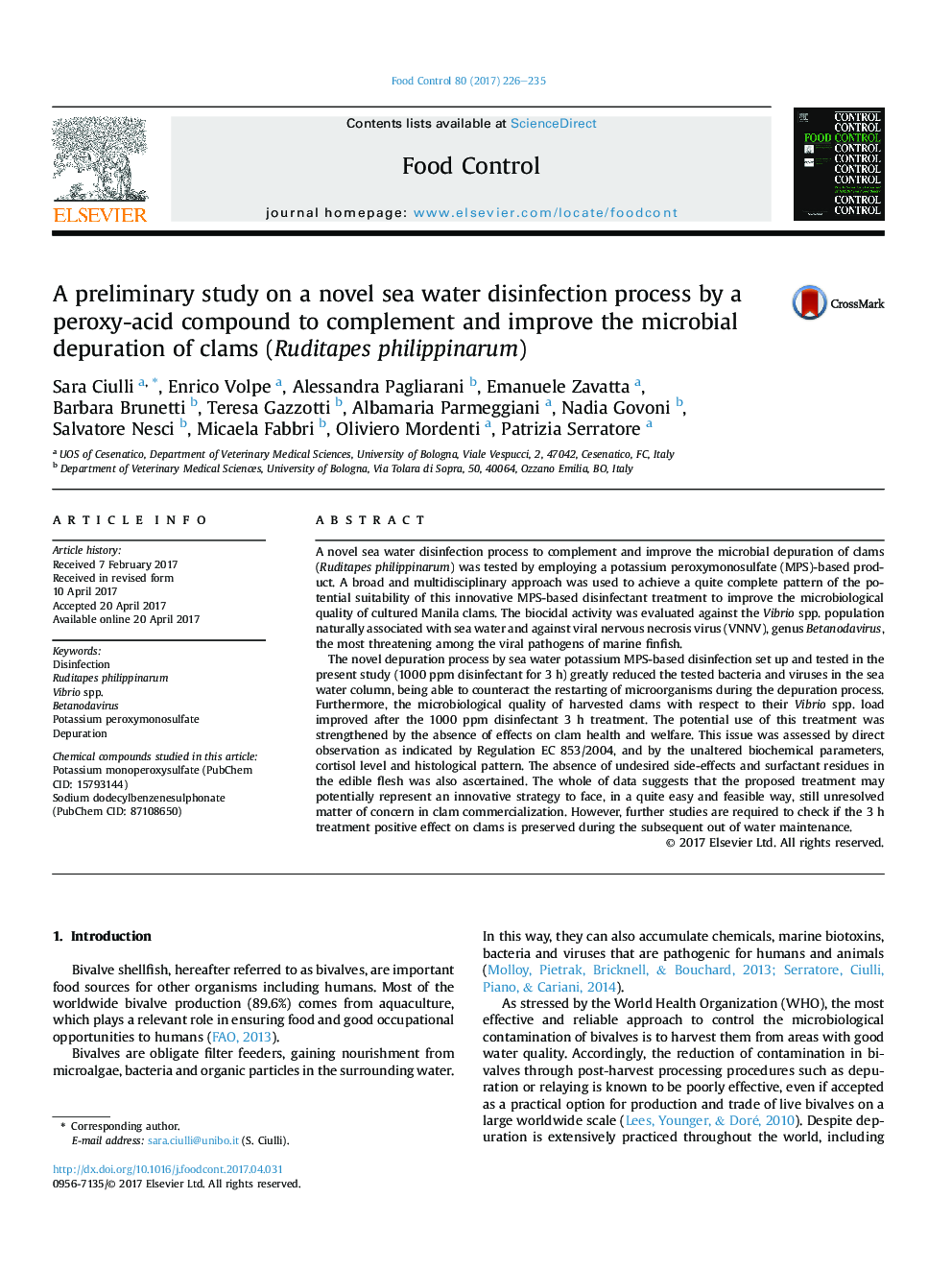| Article ID | Journal | Published Year | Pages | File Type |
|---|---|---|---|---|
| 5767246 | Food Control | 2017 | 10 Pages |
â¢A novel disinfection system to improve the microbial depuration of clams was set up.â¢The MPS-based treatment showed bactericidal and virucidal activities.â¢The treatment did not alter clam tissues and organoleptic features.â¢The process was not stressful for clams and did not leave residues in the flesh.
A novel sea water disinfection process to complement and improve the microbial depuration of clams (Ruditapes philippinarum) was tested by employing a potassium peroxymonosulfate (MPS)-based product. A broad and multidisciplinary approach was used to achieve a quite complete pattern of the potential suitability of this innovative MPS-based disinfectant treatment to improve the microbiological quality of cultured Manila clams. The biocidal activity was evaluated against the Vibrio spp. population naturally associated with sea water and against viral nervous necrosis virus (VNNV), genus Betanodavirus, the most threatening among the viral pathogens of marine finfish.The novel depuration process by sea water potassium MPS-based disinfection set up and tested in the present study (1000Â ppm disinfectant for 3Â h) greatly reduced the tested bacteria and viruses in the sea water column, being able to counteract the restarting of microorganisms during the depuration process. Furthermore, the microbiological quality of harvested clams with respect to their Vibrio spp. load improved after the 1000Â ppm disinfectant 3Â h treatment. The potential use of this treatment was strengthened by the absence of effects on clam health and welfare. This issue was assessed by direct observation as indicated by Regulation EC 853/2004, and by the unaltered biochemical parameters, cortisol level and histological pattern. The absence of undesired side-effects and surfactant residues in the edible flesh was also ascertained. The whole of data suggests that the proposed treatment may potentially represent an innovative strategy to face, in a quite easy and feasible way, still unresolved matter of concern in clam commercialization. However, further studies are required to check if the 3Â h treatment positive effect on clams is preserved during the subsequent out of water maintenance.
